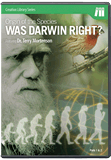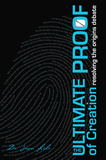Darwin, the City
Originally published in Creation 5, no 1 (June 1982): 27.
Even the Chinese Communist Party Chairman Mao knew about this city located on the hot, isolated northern coastline of the Australian continent.
He asked a visiting Australian Prime Minister if it was named after Charles Darwin, and it was. But the history of this city is sometimes as complex and as tragic as Darwin’s theory of evolution itself.
The area was discovered in 1839 and mapped by Lieutenant John Lort Stokes. It was named Port Darwin by Stokes after his naturalist friend Charles, with whom he had sailed on the Beagle between 1831 and 1836. However, early attempts at settlement were not encouraging and were all but abandoned by 1849.
Despite these failures. a government surveyor, George Goyder, prepared a plan for a permanent settlement on the shores of Port Darwin in 1869. However, when the first God-fearing settlers arrived at the location, they refused to honour the man who made the monkey’s uncle more serious than a joke. They would not call it Darwin. Instead it was named Palmerston after a Christian gentleman who recently had been Prime Minister of England. This name was to be commonly used until the death of Queen Victoria in 1901. Then, on March 18, 1911, Palmerston was officially renamed Darwin by the Governor General, the Earl of Dudley.
In its first 143 years of history, the area has had many notable firsts. In 1872 it became the first town through which Australia could communicate by Telegraph with the rest of the world. It was joined to London via the submarine cable from Java. In 1934, the airport was the “doorway” for the first regular air service between Australia and England. At 9.59 am, February 19, 1942, Darwin became the first and only Australian city to suffer enemy air attack when 188 Japanese planes bombed and strafed ships, buildings, and military installations. By the end of the day the destroyer USS Peary had sunk Only 25 of her crew were still alive. Seven other ships lay on the bottom of the harbour and the aerodrome was wiped out. In the following months another 63 raids added to the immense initial damage.
After the war the first major commercial pitchblende (uranium ore) discovery in Australia was made near Darwin at Rum Jungle, in 1949. Ten years later, in the year of the centenary of the publication of the “Origin of the Species,” Darwin was proclaimed a city; a city which had Australia’s only hospital solely concerned with the treatment of leprosy and a place which Charles Darwin never visited in his life, even though the first ship to sail in its harbour was none other than the H.M.S. Beagle.
Darwin is also Australia’s most cyclone ravaged city. While it has been blown about by many cyclones, its famous tragedy came as a Christmas present from Cyclone Tracy in the early hours of December 25,1974. Two and a half hours later 50 people were known dead and 16 were missing. Much of the town lay flat on the ground in a $500 million rubbish heap. The cyclone passed through and destroyed all the military and communications installations which gave the whole thing a sinister aura. People soon began to speculate that some enemy was practicing at weather warfare. Some 25,000 people were to be evacuated from the city. It was to be 4 years before the population numbers returned to normal.
The population at Darwin has one other claim to fame. Its alcohol consumption is probably the highest in the world. On New Years eve 1974, a week after “Tracy,” Major General Stretton, in charge of the evacuation, ordered dry celebrations only, but the tide of liquor was irresistible, the cry was “roll out the barrel.” On Christmas Day it had been even worse. At the “Buffs” Club kegs had been stored in the meatworks, and at 11 am as usual, the club opened with the boast, “in spite of the cyclone, we didn’t miss a beat!”
During the 1980/81 statistical year the 128,000 people in the Northern Territory, of which Darwin is the capital, consumed almost 25 million litres of beer, over 2 million litres of wine and over 5 million litres of spirits. Thus the apparent annual consumption for every man, woman and child was 194.6 litres of beer, 16.3 litres of wine and 4.6 litres of spirits, a factor which secured them a place in the Guinness Book of Records. Taking into account the number of children in the population (of which there are many thousands) plus the teetotallers, plus the fact that consumption is much higher in Darwin than the rest of the N.T., then many people in Darwin probably drink over 300 litres of beer yearly, or the alcohol equivalent. No wonder some have suggested “Tracy” was intended to “wake up” a drunken community and to warn a decadent, godless Australia. Ironic that the city involved was named after Charles Darwin, the man whose work on evolution has been a singularly significant cause of such godlessness.
Acknowledgements
- “Cyclone! Christmas in Darwin 1974” Sydney Morning Herald Publication.
- N.T. Drug and Alcohol Bureau, Darwin.
- N.T. Information Centre, Darwin.
- “N.T. News,” 19th February, 1982.
- “N.T. News,” April 24,1982.
- “Up the Track,” by Douglas Lockwood.
- Encyclopedia Britannica
- “Hervey Bay Chronicle,” April 26,1982.
Recommended Resources

Answers in Genesis is an apologetics ministry, dedicated to helping Christians defend their faith and proclaim the good news of Jesus Christ.
- Customer Service 800.778.3390
- © 2025 Answers in Genesis





